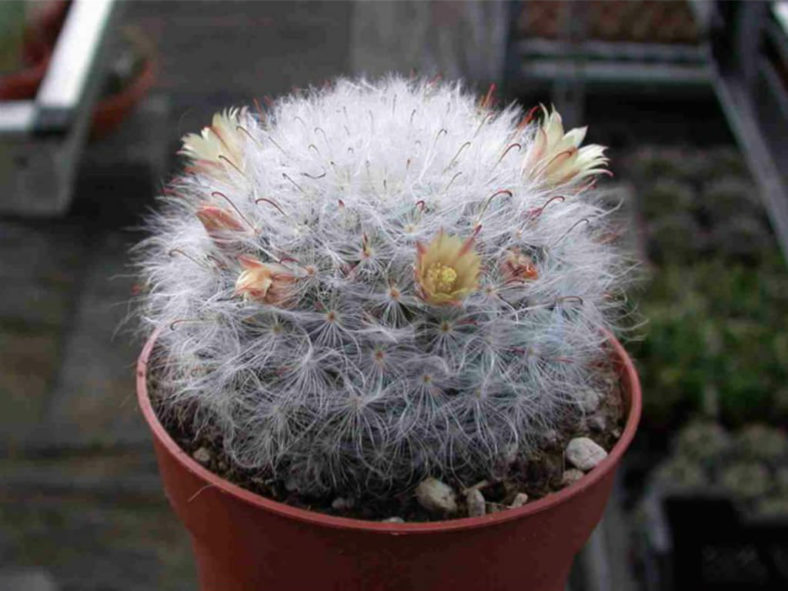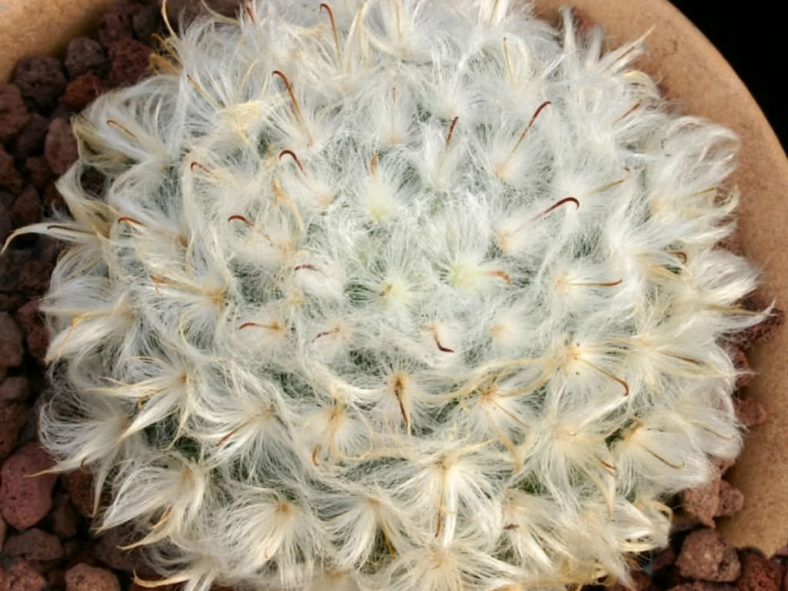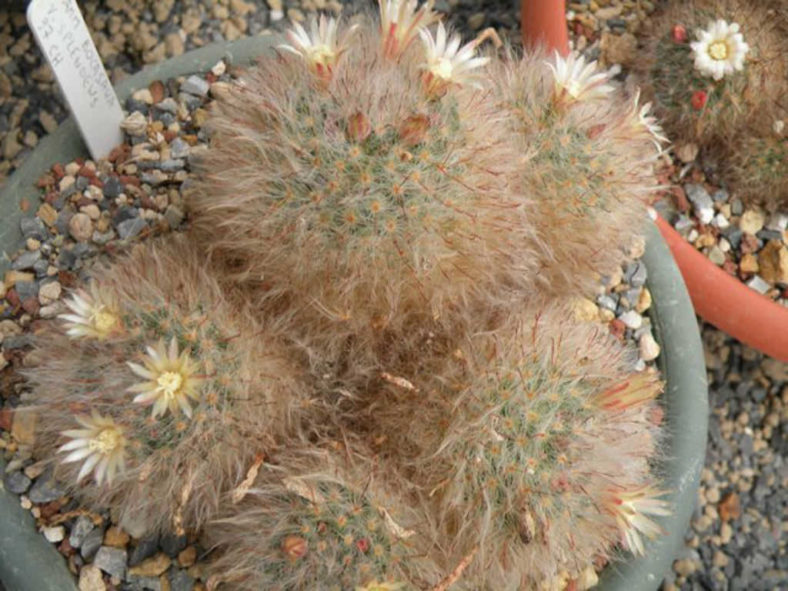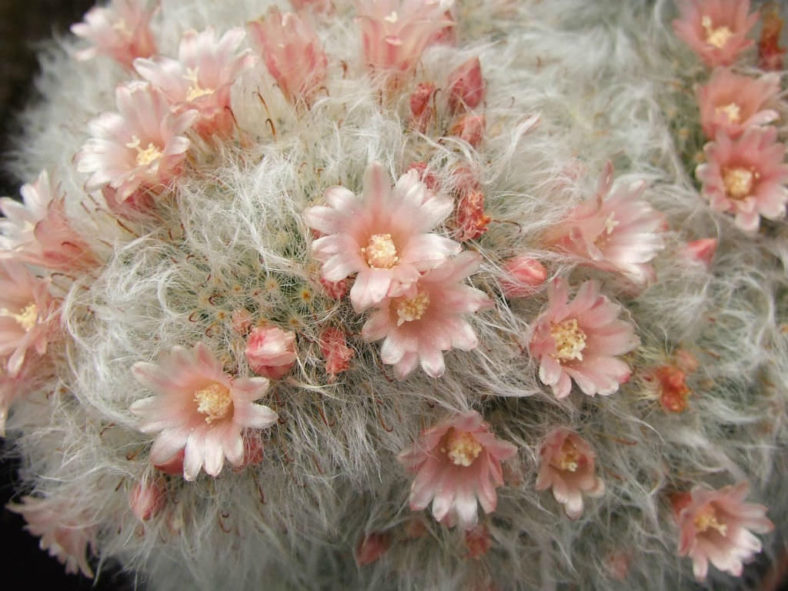Scientific Name
Mammillaria bocasana 'Splendens'
Synonym(s)
Mammillaria bocasana var. splendens, Neomammillaria bocasana var. splendens
Scientific Classification
Family: Cactaceae
Subfamily: Cactoideae
Tribe: Cacteae
Subtribe: Cactinae
Genus: Mammillaria
Origin
Mammillaria bocasana 'Splendens' is a cultivar of Mammillaria bocasana. It is similar to Mammillaria bocasana 'Multilanata', but has a profusion of short, white, woolly hairs and shorter hooked central spines.
Description
Mammillaria bocasana 'Splendens' is a clumping cactus with stems covered with short, white, woolly hairs and very short, hooked central spines. The stems are spherical, light green to bluish-green, and can grow up to 5 inches (12.5 cm) tall and 3 inches (7.5 cm) in diameter.
The flowers are creamy-white, creamy-yellow or pinkish, funnel-shaped, and can reach up to 1 inch (2.5 cm) long and 0.6 inches (1.5 cm) in diameter. The flower buds are rose-colored.

Hardiness
USDA hardiness zone 8a to 11b: from 10 °F (−12.2 °C) to 50 °F (+10 °C).
How to Grow and Care
To encourage better flowering, allow the plants to enjoy a cooling period in the winter and suspend watering. Unlike many other cacti, which use their ribs as storage devices, the Mammillaria feature raised tubercles, from which spines emerge. When you water, the tubercles will expand to allow for increased water storage. The flowers emerge from the axils of these tubercles on the previous year's growth, which accounts for their interesting halo effect. The cactus mustn't be exposed to prolonged dampness and sitting water. Never let your cactus sit in a dish of water. Lastly, ensure fertilizer during the growing season for the best results.
Repot as needed, preferably during the warm season. To repot a cactus, ensure the soil is dry before repotting, then gently remove the pot. Next, remove the old soil from the roots, removing any rotted or dead roots.
See more at How to Grow and Care for Mammillaria.
Links
- Back to genus Mammillaria
- Succupedia: Browse succulents by Scientific Name, Common Name, Genus, Family, USDA Hardiness Zone, Origin, or cacti by Genus
Photo Gallery


